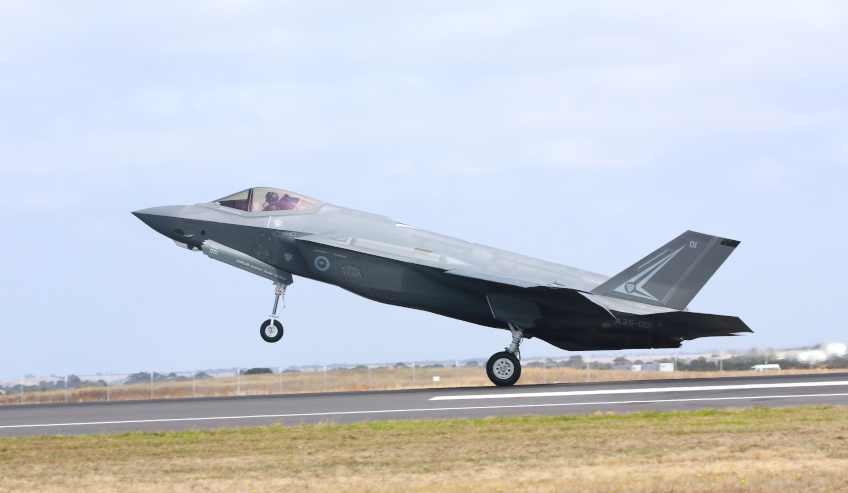In the days surrounding Anzac Day, Defence Connect will be looking back on the history of the Australian Defence Force branches, with the current series focusing on the Royal Australian Air Force.
To continue reading the rest of this article, please log in.
Create free account to get unlimited news articles and more!
For part one, please click here.
Post-World War II
Following the Second World War, the RAAF was no different to the rest of the branches of the ADF in terms of a reduction to activities.
The RAAF was involved in the Berlin Airlift in 1948-49, helping international efforts to bring supplies to the city, consisting of two existing transport squadrons, and called the RAAF Squadron Berlin Air Lift for their year of actions.
Following this operation, the RAAF would soon re-enter combat, with the outbreak of the Korean War.
No.77 Squadron RAAF had Mustang aircraft stationed in Japan with the British Commonwealth Occupation Force (BCOF), and these units were some of the first called upon from the United Nations to take part in the conflict.
These aircraft were deployed in various roles, including ground support, combat air patrol and escort missions.
The RAAF also operated transport aircraft during the Korean War, however the Australian-owned Mustangs found it difficult to compete with the North Korean MiG-15 aircraft, acquiring Gloster Meteor aircraft, with limited success.
RAAF casualties numbered 41 killed in action and seven captured, with 66 aircraft lost.
The RAAF counted three confirmed destroyed MiG-15s, with two others likely destroyed.
Following the Korean War, the RAAF would assist the US with its fight against the rising threat of communism, including the deployment of aircraft to Malta, and the Malayan Emergency, where six Avro Lincolns from No.1 Squadron RAAF helped assist in the fight against guerillas attacking the Malayan government.
The Lincolns conducted bombing runs against the guerillas' jungle bases, and were assisted in these in later years by Canberra Bombers.
Douglas Dakotas were also deployed, and were used for cargo runs, in troop movement and in paratroop and leaflet drops in Malaya.
The RAAF would go on to play a significant role in the Vietnam War, with Caribou STOL aircraft contributed as part of the RAAF Transport Flight Vietnam, with Canberra Bombers flying nearly 12,000 bombing sorties, dropping over 75,000 bombs with 786 enemy personnel confirmed killed.
A further 3,390 were estimated killed, with nearly 9,000 structures, 16,000 bunkers, 1,300 sampans and 74 bridges destroyed by the RAAF.
The transport aircraft contributed by the RAAF supported anti-communist ground forces over the course of the conflict, and UH-1 helicopters were also used for medical evacuation and close air support.
The RAAF had six killed in action, with eight non-battle fatalities, 30 wounded in action and 30 injured.
Following the Vietnam War, the RAAF would not be used again in combat until the deployment of 14 F/A-18s from No.75 Squadron RAAF operated in escort and ground attack roles in the Iraq War in 2003, with a detachment of AP-3C Orion maritime patrol aircraft deployed more broadly across the Middle East between 2003 and 2012.
These aircraft's operations ranged from the Persian Gulf to Somalia, in a wide variety of roles, such as surveillance patrols and operation support.
In 2014, the RAAF deployed an Air Task Group consisting of up to eight F/A-18F Super Hornets, a KC-30A Multi Role Tanker Transport, one E-7A Wedgetail Airborne Early Warning & Control aircraft, as well as 400 personnel, sent to Al Minhad Air Base in the UAE to assist with combating Islamic State forces in Iraq.
Two years ago, two RAAF AP-3C Orion maritime patrol aircraft were deployed by the RAAF to the Philippines to assist with the Marawi crisis, keeping up with Australia's intentions of contributing to peacekeeping and humanitarian operations.
Moving towards fifth-generation capabilities
Most recently, the RAAF has moved into improving its air-strike capability following the acquisition of the first of its ordered F-35A Joint Strike Fighter aircraft in December 2018.
The arrival of the F-35A JSF served as a catalyst for the RAAF to truly be considered a fifth-generation force, boosting a fleet that already boasts six E-7A Wedgetail aircraft that serve as one of the most advanced air battlespace management capabilities in the world.
The RAAF achieved final operational capability for the E-7A Wedgetail in May 2015, and has since participated in Exercise Bersama Lima, Cope North, Red Flag, and Pitch Black, and currently deployed on Operation OKRA, as mentioned earlier.
The RAAF also operates 11 EA-18G Growlers out of RAAF Base Amberley by No.6 Squadron, which last week successfully achieved initial operating capability (IOC).
The Growler is an electronic attack aircraft and provides complementary capability to the existing fleet of F/A-18F Super Hornet's and F-35A JSF aircraft.
Another step the RAAF is taking towards fifth-gen capability is the procurement of the AIR 6500 program, a joint battle management system that will "interconnect the many disparate platforms, systems and sensors across the air, land, space, electromagnetic and cyber domains into a collaborative environment that provides shared situational awareness of the battlespace and the ability to rapidly plan responses to threats".
The program has drawn together individual companies including Northrop Grumman, Lockheed Martin, Boeing and Raytheon to develop and implement a multi-domain battle management and integrated air and missile defence system to enable the 'joint force' structure, operating doctrine and concept.

 Login
Login







